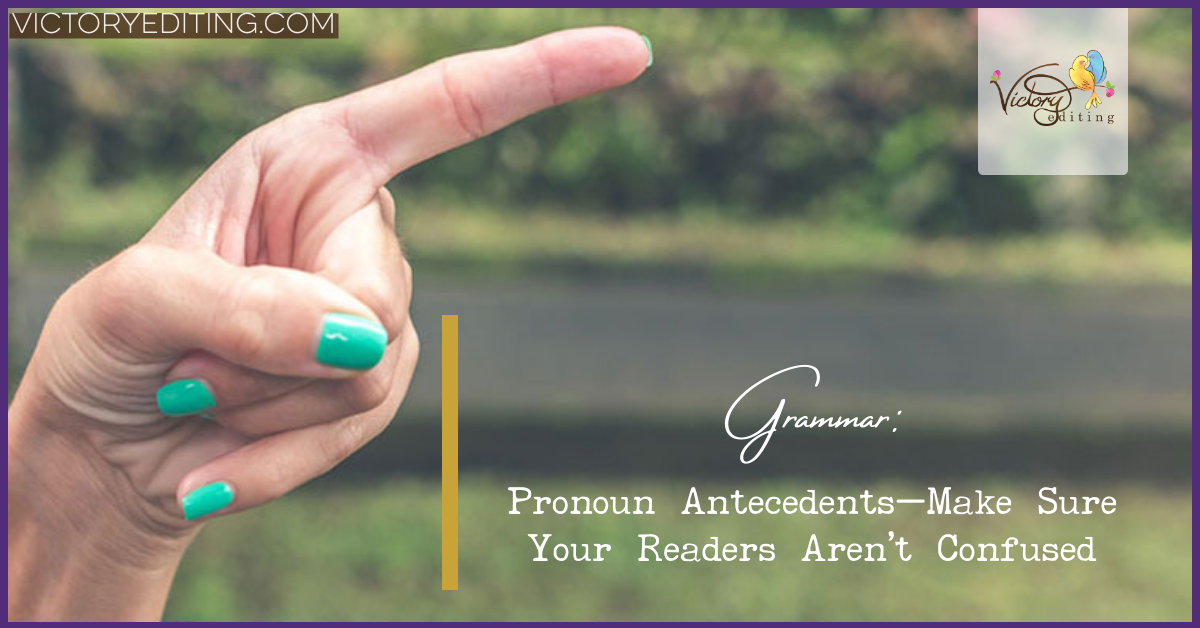Pronouns are wonderful tools—they keep our sentences from being repetitive and are super versatile. In a way, they’re like a shortcut on a computer. You know those little icons on your desktop that point to an application but aren’t the program itself? Likewise, pronouns are stand-ins for a noun. But in order for a pronoun to make sense, your reader or listener must know what the pronoun is referring to. That’s the antecedent.
For example:
This is my journal. I write in it every day.
Generally, a pronoun antecedent is the closest previous noun. But sometimes there will be other nouns in a sentence or paragraph, in which case it’s important to “reset” your pronouns and antecedents for clarity.
Take a look at this example:
Lucy walked over to our group and introduced herself. I looked at my friend Sally and raised a brow, then reached out to shake her hand.
Notice how the sentence, as written, reads that you’re shaking Sally’s hand? But that’s not what was meant. To clarify that for the reader, we need to rearrange the sentence or “reset” the antecedent.
Take a look at this fix:
Lucy walked over to our group and introduced herself. I looked at my friend Sally and raised a brow, then reached out to shake the new girl’s hand.
In conclusion, always remember where your pronouns are pointing and reset as necessary. Doing so makes your writing stronger and keeps your readers from getting confused, and that’s always a good thing.
Happy writing!
Photo by Artem Beliaikin on Unsplash
Hi! I’m in the process of putting together a grammar class. You can click below to see what classes are coming down the pike and to sign up to be notified when they launch. I can’t wait to see you there!


